We shouldn’t have to explain why we like the plants we choose… we just do, and that’s fine! But every now and then, it’s fun to step beyond the notion of “it’s just so pretty…” and really notice how a plant smells…. or feels to the touch… or has especially eye-catching and engaging flowers or foliage.
The notion of sensory gardening has been around for a very long time, but it doesn’t get a lot of press. That’s unfortunate because growing plants that immediately engage our senses can be especially pleasant for most anyone, especially children and the elderly. I thought it might be fun to share some of the plants that light up my own senses of sight, smell and touch. Your list is probably quite different, but that’s the beauty of gardening! See what you think.
Sight… plants that catch our eye
We’ll start with the easiest one: sight. The list is endless. When I’m shopping for plants, I’m especially drawn to plants with flowers or foliage that are interesting, not just pretty.
Take coleus, for example.
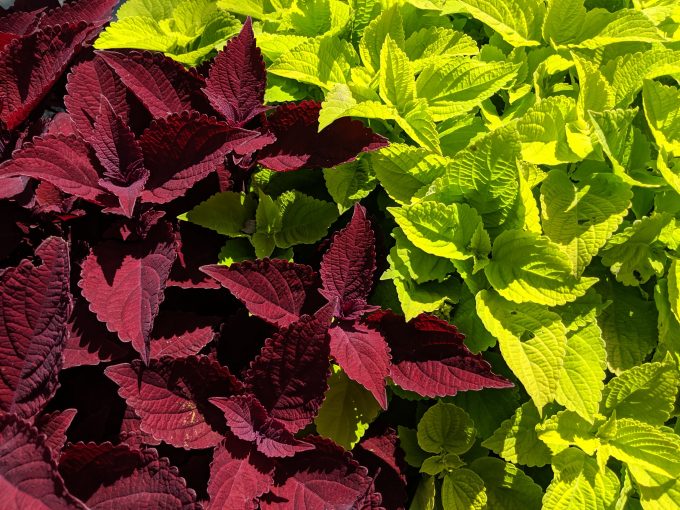
It’s the brilliant colors of coleus and their striking patterns (as seen at the top of this blog) that I find so irresistible. I used to include coleus in a large mixed containers of flowers. Lately, though, I plant five or more different coleus into a single very large pot with nothing else, just coleus. Pay attention to the plant labels, especially the sun/shade requirements and the mature height of the different varieties, then plant accordingly. Coleus puts on a wonderful show and definitely draws compliments!
Flowers don’t have to be big to be showy. Just look at sanvitalia.
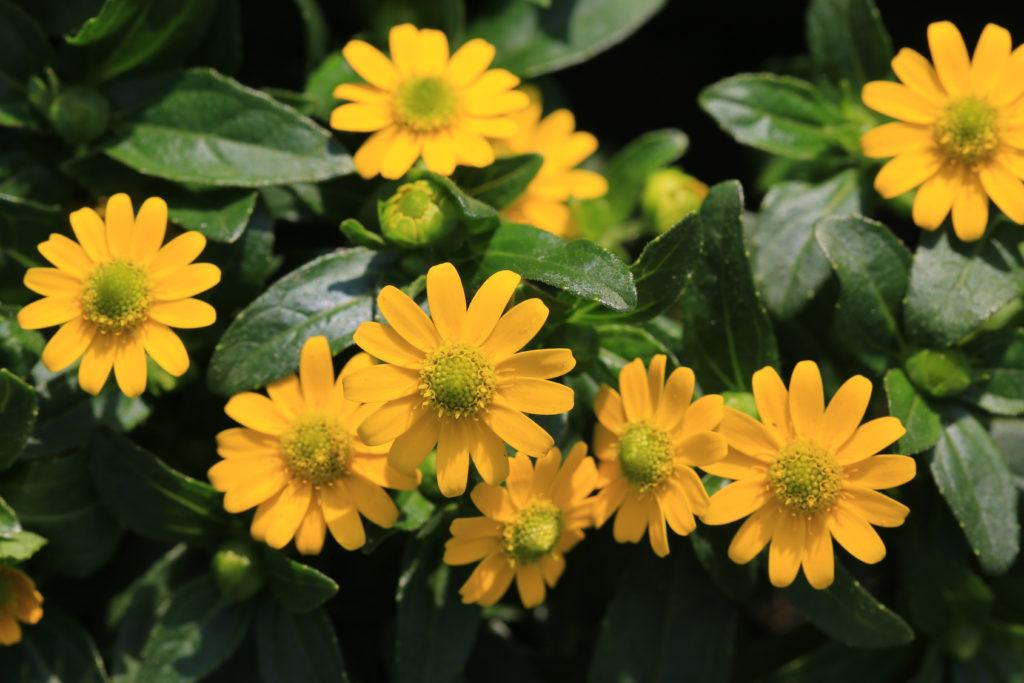
These tiny, bright yellow daisy-like flowers aren’t even an inch across, but there are so many of them! Even a single plant offers great eye appeal! If you have a spot in a garden bed or a mixed container that needs a “pop,” why in the world wouldn’t you reach for this little gem?
Sanvitalia prefers full sun and well-drained soil. It can grow up to eight inches tall and twelve inches wide, and can tolerate hot locations.
For a visual change of pace, you can’t go wrong with cosmos.
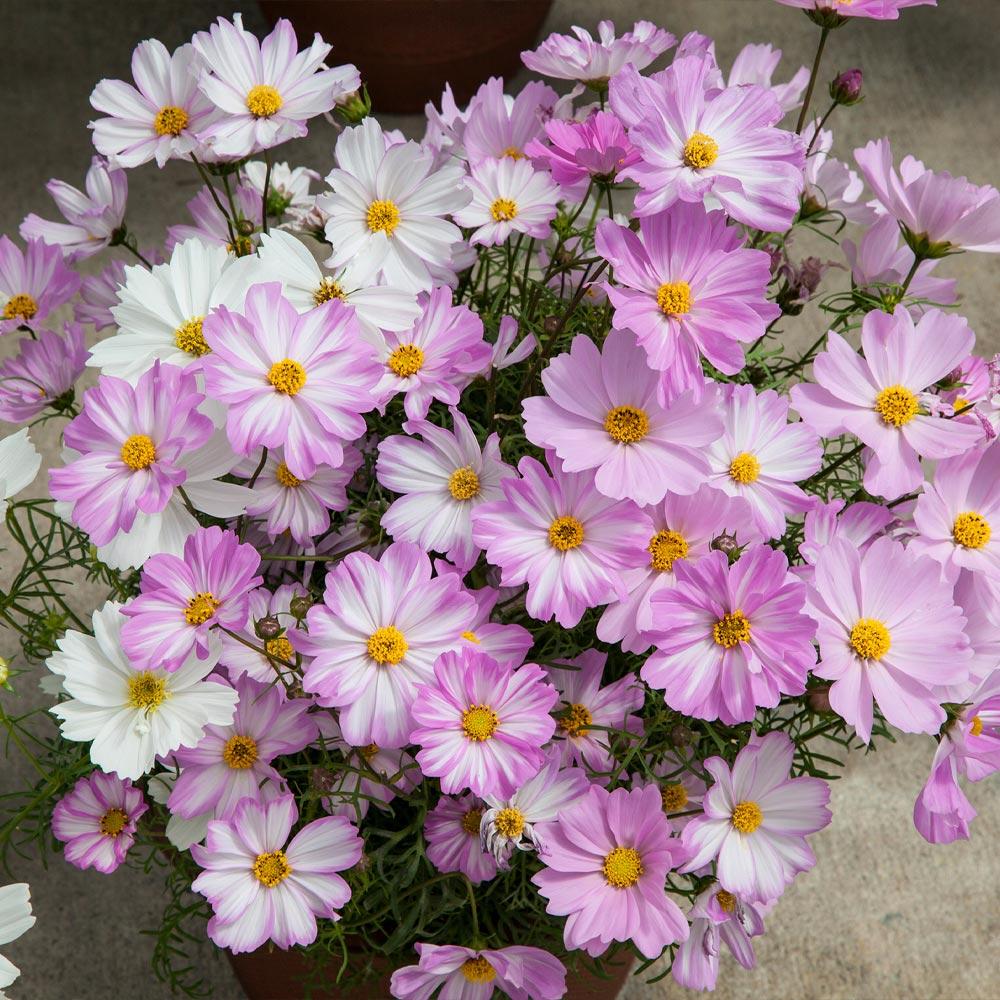
Cosmos definitely isn’t showy. It’s sweet and understated. But combine those delicate-looking petals with that lacy, almost fern-like foliage, and I’m all in! Cosmos comes in shades of pink, white or both. The variety shown here, “Apollo Lovesong,” grows 18-20″ tall and produces an abundance of three- to four-inch blossoms. It does best in full sun or part shade.
Smell… just breathe deeply
On a recent wander through Tagawas, I made a point to cruise the aisles of our extensive herb department. That’s where I found three great candidates for the sense of smell. Let’s start with one of my favorites, “Cerveza n’ Lime” plectranthus.
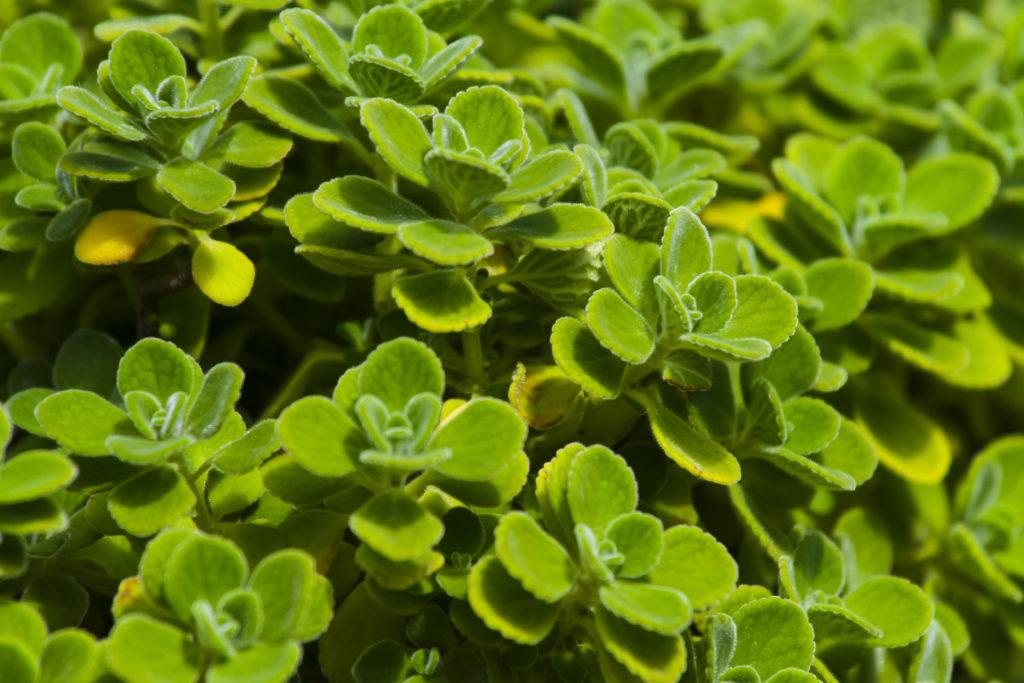
If you’re fond of aromas in the citrus family, I’m guessing you’ll love this plant. It’s unapologetically limey! And there’s a bonus! It has the softest, most velvety thick leaves! They feel like the carmel-colored tips of Sophie’s ears. (She’s my yellow lab.) So actually, “Cerveza n’ Lime” plectranthus qualifies for inclusion in both the smell and touch categories.
It grows 14-18″ tall and 8-12″ wide, ‘tho I’m guessing it may not get that big in our climate because it’s not winter hardy here. Give it full sun to part shade and it should be happy grown as a summer annual.
I apparently have a weakness for the fragrance of citrus. Enter lemon verbena.
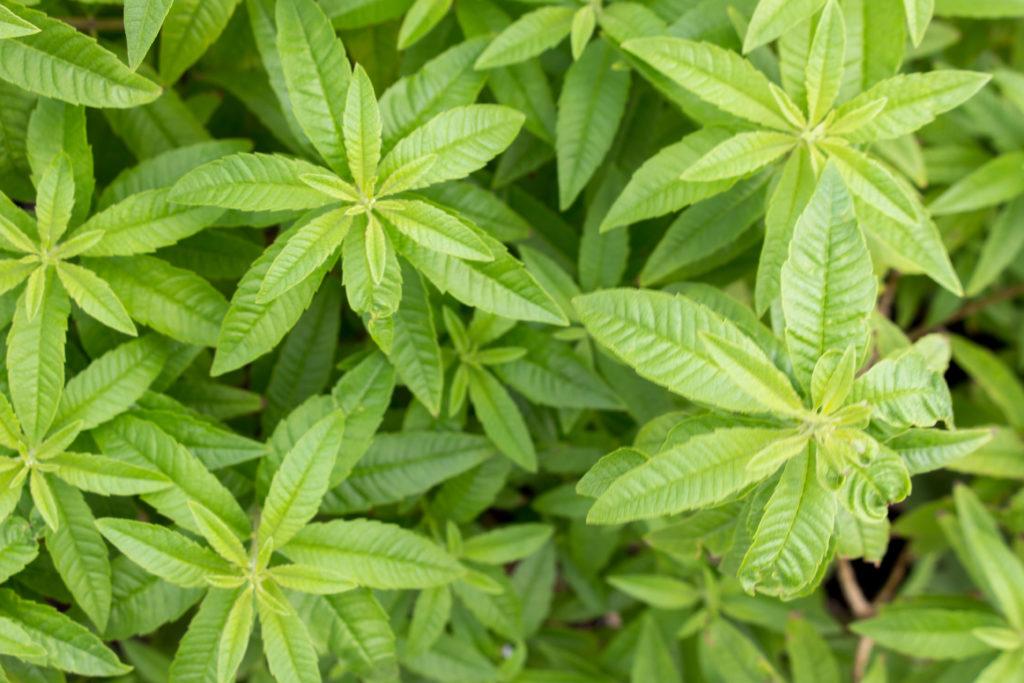
For me, lemon is one of the best aromas of summer: fresh, clean, light and bright. You get all of that and more with this lovely green herb. It’s best in full sun, but will tolerate bright afternoon shade. It’s a perennial shrub in much warmer climates, but does beautifully as an annual in our Zone 5 and thrives in containers. Just make sure it’s grown in well-drained soil. It will not tolerate “wet feet!”
Moving from citrus to rich and sweet… check out chocolate mint!
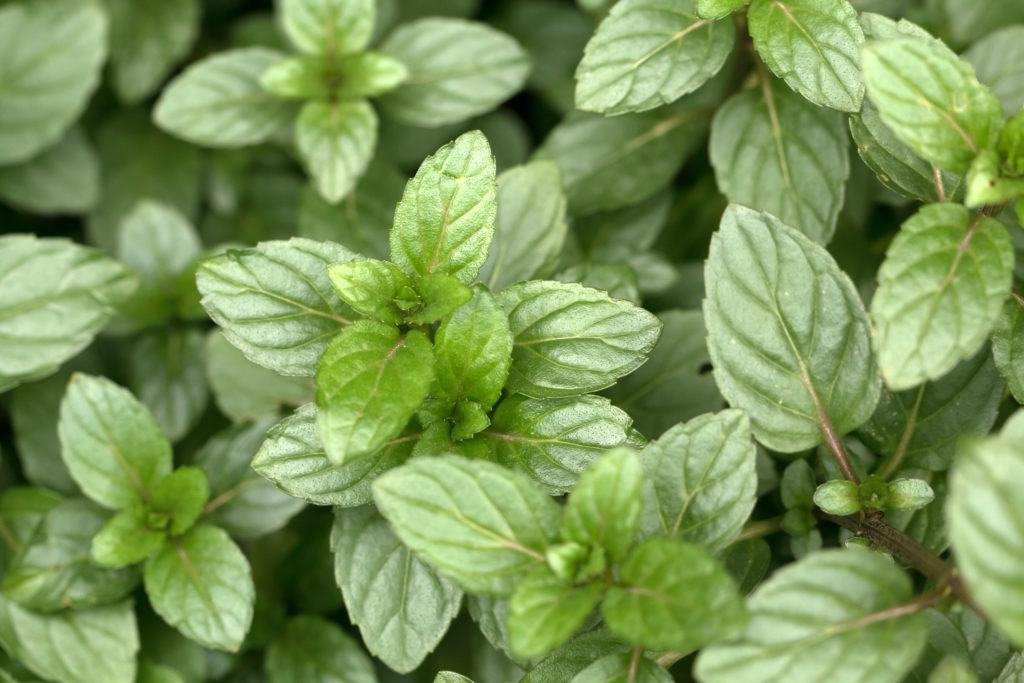
I’m a huge fan of dark chocolate, and the fragrance of this scented mint kicks that craving into high gear. As with any mint, think twice before you plant it directly in the ground or where the trailing stems can touch the soil. Since this mint is hardy down to Zone 3, left unchecked, it’s likely to take off! Growing (and controlling) mints in containers is usually the best approach.
Anytime you want to grow aromatic plants like these, try to keep them close to where you and your family and friends gather on a deck or patio, where these fragrances are just a rub and a sniff away.
Touch… a treat for the fingertips
Mexican feather grass always has a place in a big pot on my deck or in my garden beds. I can’t seem to keep my hands out of it whenever I walk by. I’m routinely “combing” through the thin arching blades of this graceful plant, enjoying the tickle as I go. Seed heads set in summer and are a lovely, frizzy pale blonde by fall.
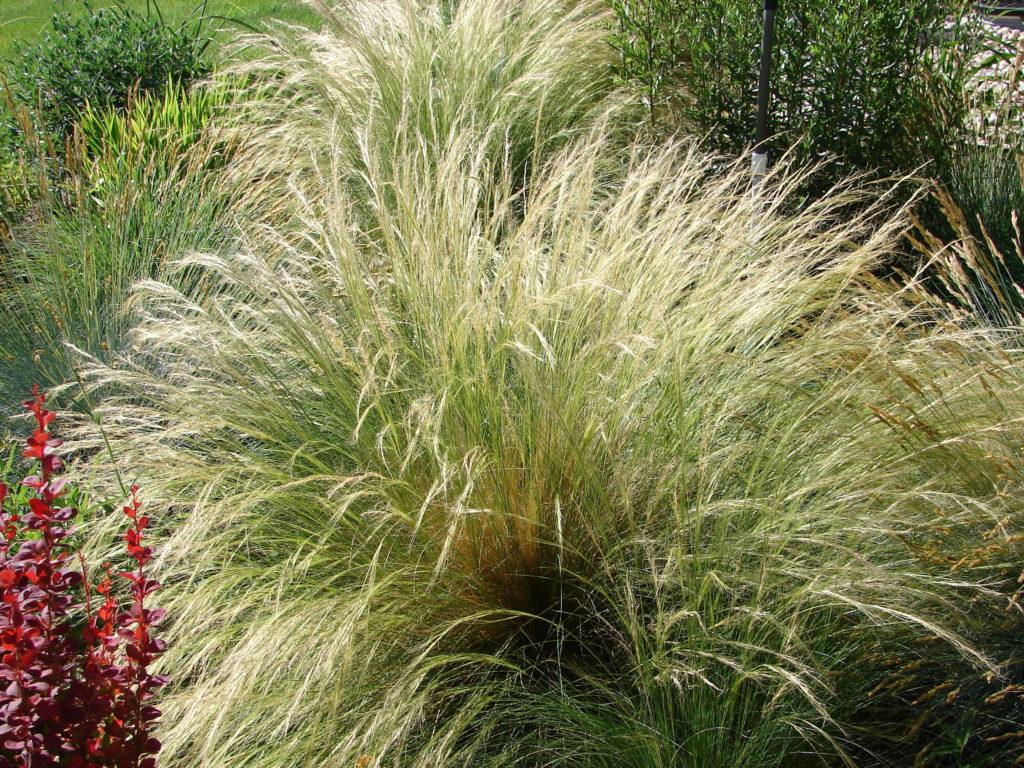
Mexican feather grass has a hardiness rating of Zone 6, but it’s doing fine growing as a perennial in a protected area near my house. A clump of this grass can grow up to 24″ tall and wide. Grow it in full sun to part shade, and keep it well-watered.
Let’s not forget your old friend and mine, purple fountain grass.
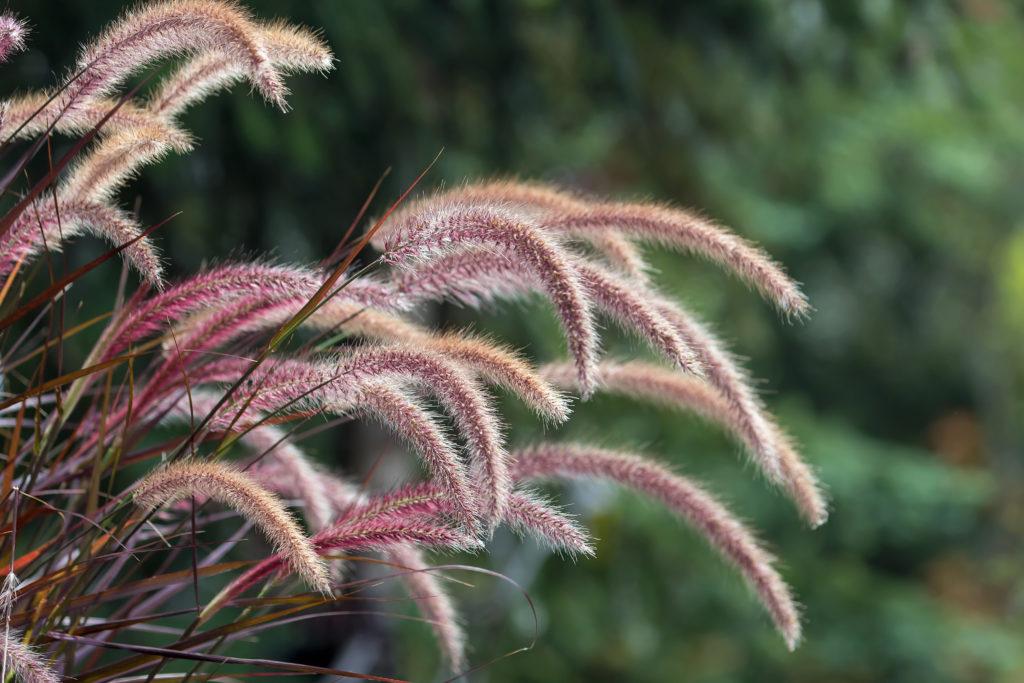
I know it’s been around a long time and may not have the luster of something new and exciting, but think about it. Purple fountain grass is so right at home as the “thriller,” the tallest plant in a big mixed pot of annuals, and it deserves respect for doing its job so well. The little caterpillar-like purplish seed heads all but ask to be stroked. In my mind, it gets extra points for swaying so gracefully with every gentle breeze. When you live in a routinely windy area, as I do, dancing ornamental grasses are always a welcome sight.
Give purple fountain grass full sun and well-drained soil, and you’ll almost certainly have a happy plant.
What sensory plants draw you in?
There are so many more plants in the rows of annuals, herbs and perennials at Tagawas that could open new doors to your own senses. For taste and fragrance, it’s hard to beat lavender. Try hanging lavender stems upside-down to dry, then using the flowers to infuse sugar for sugar cookies or ice cream. For sound, plant a large clump of perennials grasses. Many of them make a soft music all their own in the fall when their seed heads rustle in the wind.
The list of sensory plants really is endless. Why not make a point to tap into your own senses the next time you come to Tagawas. And let us know what you discover by posting on Facebook or Instagram!




